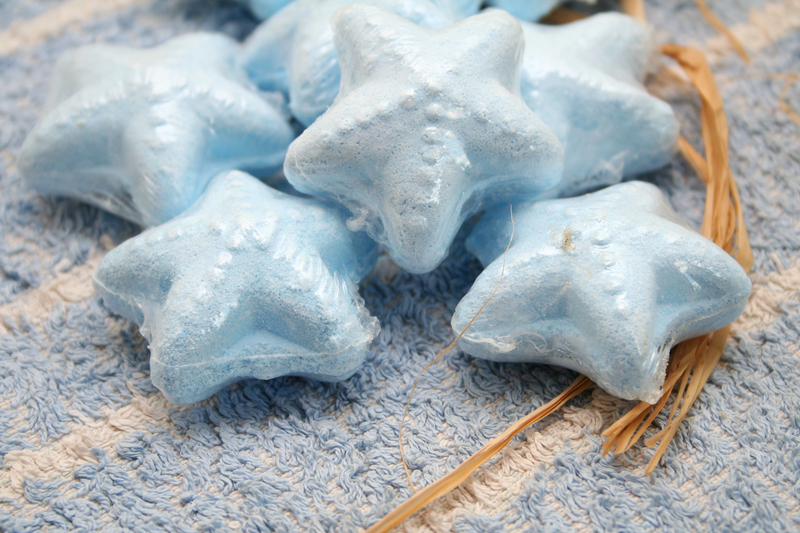Allergen Reduction Made Easy: Dust-Proof Your Home
Posted on 03/09/2025
Allergen Reduction Made Easy: Dust-Proof Your Home
Living with allergies can be challenging, but maintaining an allergen-free environment is possible with the right strategies. If you're looking for effective ways to keep your home as dust-free and allergy-friendly as possible, this comprehensive guide will show you how to achieve optimal allergen reduction and create a healthy living space for you and your family.
Understanding Indoor Allergens and Their Impact
Allergens are substances that can cause allergic reactions in some people. Common household allergens include dust mites, pet dander, pollen, molds, and cockroach debris. Since we spend most of our lives indoors, exposure to indoor allergens can trigger symptoms like sneezing, coughing, watery eyes, skin rashes, and even asthma attacks.
- Dust mites thrive in warm and humid environments, especially in bedding, upholstery, and carpets.
- Pet dander is found in skin flakes, saliva, and urine of furry animals such as cats and dogs.
- Mold spores flourish in damp areas.
- Pollen can be carried inside from outdoors through open windows and on clothing.
- Cockroach droppings are another lesser-known source of allergens.
Reducing allergen levels in the home not only eases allergy symptoms but also improves overall indoor air quality. Dust-proofing your living environment doesn't have to be hard. With a strategic approach and a few lifestyle tweaks, you can drastically reduce indoor dust and make your home a sanctuary for allergy sufferers.

Why Is Dust-Proofing Your Home Essential?
Dust-proofing your home is one of the best ways to minimize contact with trigger substances. Dust acts as a carrier for many allergens. By controlling dust, you " dust-proof " your living space while naturally minimizing exposure to other allergy triggers. The goal is not to achieve complete sterility but to maintain an environment where dust and associated allergens are kept at consistently low levels.
- Improved health: Lowering allergen exposure lessens the risk of allergies and respiratory problems.
- Better sleep: Clean, dust-free bedrooms support restful, undisturbed sleep cycles.
- Enhanced productivity: A tidy, dust-reduced environment increases focus and reduces time lost to sickness.
- Long-term savings: Proactive allergen reduction helps protect home furnishings and reduces cleaning expenses.
Step-by-Step Guide to Allergen Reduction and Dust-Proofing
1. Identify Problem Areas
The first step to allergen control is identifying where the most dust accumulates. Focus on:
- Bedding and mattresses
- Upholstered furniture
- Carpets and rugs
- Window treatments (curtains and blinds)
- Ceiling fans and air vents
- Bookshelves and cluttered surfaces
These are prime spots where dust and allergens settle most frequently.
2. Upgrade Your Cleaning Routine
Regular, thorough cleaning is the cornerstone of dust reduction. Here are some optimized habits:
- Vacuum weekly using a vacuum with a HEPA filter, which traps tiny allergen particles.
- Wet dust surfaces with a damp microfiber cloth to prevent stirring up dust. Dry dusting simply redistributes particles into the air.
- Mop hard floors at least once a week. Skip brooms; they spread dust rather than remove it.
- Wash bedding in hot water (130?F/54?C) weekly to kill dust mites.
- Shake out and launder curtains and cushion covers regularly.
- Declutter frequently: Fewer items mean less surface for dust to settle.
3. Minimize Soft Furnishings & Textiles
Upholstered furniture and fabrics are notorious dust-collectors and dust mite havens. Consider:
- Choosing leather or vinyl furniture as they are less likely to harbor dust compared to fabric.
- Replacing heavy drapes with washable curtains or blinds.
- Opting for hardwood or tile flooring instead of carpet, especially in bedrooms.
- Rolling up area rugs during high allergy seasons.
For essential textiles--like carpets or throws--commit to frequent deep-cleaning.
4. Encasing Bedding and Mattresses
Mattresses and pillows harbor the largest populations of dust mites. Protect your sleep area using allergen-proof covers:
- Use zippered, dust-mite-proof encasements for all pillows, mattresses, and box springs.
- Replace old pillows every 1-2 years, as they accumulate dead skin and dust mites.
- Choose washable comforters and blankets for easy and frequent laundering.
This simple step can significantly slash allergy symptoms for sensitive individuals.
5. Control Indoor Humidity
High humidity encourages both dust mite and mold growth. The EPA recommends keeping household humidity below 50% to maintain an allergen-friendly environment. Tips to achieve this:
- Use dehumidifiers in damp areas such as basements and bathrooms.
- Repair leaks and ensure proper ventilation, especially in kitchens and baths.
- Run exhaust fans during and after showers and cooking.
- Consider a hygrometer to monitor your indoor humidity levels.
6. Invest in High-Efficiency Air Filtration
Mechanical air filtration makes a significant difference in minimizing airborne allergens. Strategies include:
- Install HEPA air purifiers in bedrooms and main living areas.
- Change HVAC system filters every 3 months, or more frequently if you have pets.
- Ensure all air ducts are clean--consider a professional service every few years.
- Keep windows closed during high pollen days to prevent allergies from entering.
7. Manage Pet Allergens
Pet dander is a major contributor to household allergens. To enjoy furry companions while reducing symptoms, try:
- Bathing pets weekly, using a vet-approved shampoo.
- Keeping pets off beds and upholstered furniture.
- Designating "pet-free" rooms, especially bedrooms for allergy sufferers.
- Vacuuming pet areas daily.
8. Prevent Mold and Pollen Infiltration
Mold and pollen are pervasive and can worsen allergies if not tightly controlled:
- Fix water leaks and dry wet zones immediately.
- Clean bathrooms and kitchens with mold-inhibiting cleaners.
- Remove shoes at the door to prevent tracking in pollen and dirt.
- Shower after spending time outdoors to wash off pollen.
- Use an indoor air purifier during allergy season.
Create a Dust-Free Bedroom: The Allergy-Proof Sanctuary
Since we spend about a third of our lives sleeping, the bedroom should be your top priority for allergen reduction and dust-proofing. Here's how to make your sleeping quarters a haven:
- Eliminate unnecessary decor, books, and knick-knacks.
- Keep closets organized and clothes clean.
- Don't let pets sleep in the bedroom.
- Use minimal window treatments--blinds over curtains when possible.
- Vacuum under the bed and furniture regularly.
Combining these steps with allergen-proof bedding and regular cleaning delivers powerful allergy relief results.
Best Products to Help Dust-Proof Your Home
Investing in the right allergy reduction and dust-proofing products further boosts your efforts. Consider stocking your home with:
- HEPA-filter vacuums for carpet, furniture, and hard floors.
- Allergen-proof mattress and pillow covers that are certified for dust mite protection.
- Microfiber cleaning cloths and mops (these trap dust more effectively than standard materials).
- HEPA or high-efficiency air purifiers with replacement filters.
- Dehumidifiers for moisture control.
- Green, fragrance-free cleaning solutions to avoid introducing new irritants as you clean.
Troubleshooting: Signs You Need Better Allergen Control
Even with your best efforts, you may find allergy symptoms persisting. This could indicate hidden sources of dust or ineffective cleaning habits.
- Persistent sneezing or coughing indoors
- Itchy, red, or watery eyes
- Worsening asthma symptoms
- Visible dust buildup on surfaces and vents
- Moldy odors, especially after rain or in damp areas
If you recognize these warning signs, try intensifying your dust-proofing measures, inspecting hidden dust areas, and upgrading home maintenance routines.
Professional Dust-Proofing and Allergen Reduction Services
Severe allergies may call for professional intervention. Certified home allergen specialists can:
- Assess your home for unseen dust accumulation or trapped allergens
- Offer deep-cleaning services for carpets, ducts, and upholstery
- Install advanced air purification systems
- Provide customized allergen-reduction recommendations
If your health or productivity is suffering, these investments can provide substantial relief and peace of mind.

Simple Habits for Ongoing Allergen Reduction
- Wash hands often to keep transferred allergens at bay.
- Change HVAC filters per manufacturer's instructions.
- Rotate cleaning chores among household members so tasks aren't skipped.
- Monitor pollen counts and keep windows closed on high pollen days.
- Trim foliage near windows to reduce pollen infiltration.
Over time, these proactive behaviors help reinforce a dust-free, allergen-controlled living environment.
Conclusion: Make Allergen Reduction in Your Home Effortless
Dust-proofing your home for allergy reduction doesn't have to be overwhelming. By following a strategic plan--covering everything from cleaning routines and textile choices to air filtration and moisture control--you can greatly alleviate allergy symptoms and improve the overall well-being and comfort of your household.
Embrace allergen reduction as a lifestyle, not a single event. With consistency and the right tools, your home will become a safe haven for allergy sufferers, children, and guests alike.
Start today, and breathe easy--your journey to a dust-free and allergen-reduced home begins now.




